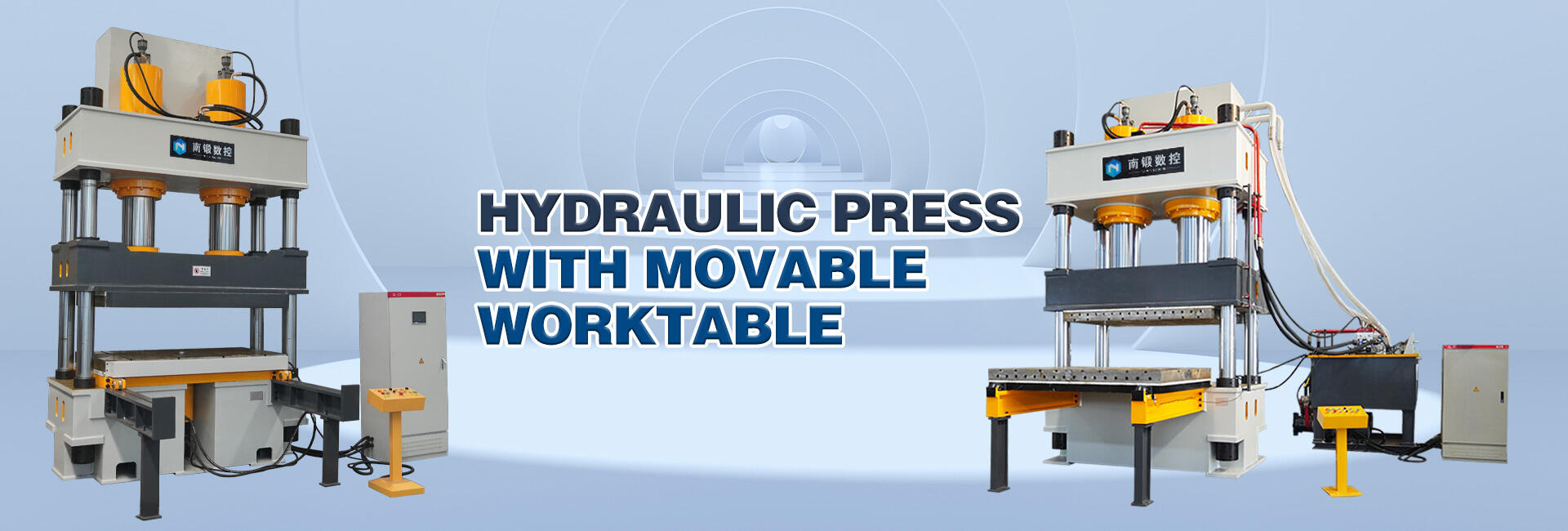Mitkä ovat yleiset vianhakukäytännöt, jos 200-tonnin C-kehyksen hydraulinen paine kokaa alenemista paineessa?
Ongelmanvaiheiden ratkaiseminen painenvähennyksissä 200-tonnin C-kehyksen hydraulisessa painossa
Hydrauliset painot, kuten Nadun Machinery Manufacture Co., Ltd. tuottamat 200-tonnin C-kehyksen mallit, ovat olennaisia monissa teollisuuden sovelluksissa niiden luotettavuuden ja tehokkuuden vuoksi. Kuitenkin, kuten mikä tahansa koneistus, niissä voi esiintyä ongelmia, jotka vaativat ongelmanvaiheita. Yleinen ongelma on painenvähennys, joka voi merkittävästi vaikuttaa painon suorituskykyyn. Tässä on joitakin keskeisiä vaiheita diagnosoidaksesi ja korjataksesi painenvähennyksiä 200-tonnin C-kehyksen hydraulisessa painossa.
1. Tarkista hydraulinen väyte
Yksi ensimmäisistä askeleista on tarkastaa hydraulinen väyte . Varmista, että väyte tasot ovat riittäviä ja että väyte ei ole saastunut. Matalat väyte tasot tai saastunut väyte voivat aiheuttaa painenvähennyksiä. Jos väyte on likainen, sen tulisi korvata valmistajan suosittelemalla tyypillä.
2. Tarkasta vammut
Hydraulinen vammut ovat yleinen syy painemuodostuksiin. Tarkista kaikki putot, sovitteet, sigaatit ja yhteydet ilmeisten vammojen varalta. Etsi öljyä maassa koneen alla tai mahdollisia pilkkuja. Kiinnitä tiukasti mitkä tahansa hikoilleet yhteydet ja vaihda kaikki vaurioittuneet osat.
3. Tarkasta hidraulinen pommi
Hidraulinen pommi on keskeinen paineen ylläpitämiseksi. Tarkista pommi mahdollisten vaurioiden tai vammojen varalta. Kuuntele epätyypillisesti ääniä, jotka voivat osoittaa sisäistä vauriota tai tehokkuuden puutetta. Varmista, että pommi toimii oikealla RPMin mukaisesti käyttöohjeessa.
4. Tarkasta purkusipuli
A vikoittunut purkusipuli voi johtaa painemuodostuksiin. Tarkista purkusipulin asetus ja toiminta. Jos sipuli on kiinni auki tai väärin asetettu, sen täytyy säätää tai vaihtaa.
5. Arvioi painemittari
Epätoimiva painemittari voi antaa epätarkkoja lukemia, mikä johtaa vääriin diagnooseihin. Varmista tarkkuus vertailemalla paineindikaattoria tunnetun toimivan indikaattorin kanssa. Vaihda indikaattori, jos se on vioittunut.
6. Tarkista tilaus ja murtimet
Hydrauliset tilaukset ja murtimet ovat keskeisiä paineen ylläpitämiseksi. Tarkista tilaukset mahdollisista kuljetuksista, vaurioista tai vuodoista. Tarkista murtimien ympärillä olevat lukit merkitystä kuluihin tai vaurioihin ja vaihda ne tarvittaessa.
7. Arvioi hydrauliset johtot
Estetyt tai kaareneet hydrauliset johtot voivat rajoittaa virtausta, mikä johtaa painevajeisiin. Tarkista kaikki johtot esteille tai kaareuksille. Poista esteet ja varmista, että johtot on ohjattu ja kiinnitetty oikein.
8. Tarkista ilta järjestelmässä
Ilma hydraulijärjestelmässä voi aiheuttaa painevaihteluita. Purjeile järjestelmää poistaaksesi kaiken sidottuna olevan ilman. Varmista, että kaikki ilta on poistettu ja että järjestelmä on kunnolla suljettu estääkseen ilman pääsy.
9. Tarkasta toimintaolosuhteet
Jotkut kerrat ongelma voi liittyä toimintaolosuhteisiin. Varmista, että painekeila toimii määritellyissä rajoissa ja että työympäristö on sopiva hydraulijärjestelmälle.
Järjestelmällisesti noudattamalla näitä vianhakuvaiheita käyttäjät voivat tunnistaa ja korjata painenvähennykset 200-tonnin C-kehyksen hydraulisen paineen laitteissa, varmistamalla laitteen optimaalisen toiminnan ja kestovuoren. Nadun Machinery Manufacture Co., Ltd:ssä olemme sitoutuneet tarjoamaan korkealaatuisia koneita ja laajaa tukea asiakkaillemme. Lisäapua tai tietoa tuotteistamme varten käy sivuillamme tai otathan meihin suoraan yhteyttä.
Nadun Machinery Manufacture Co., Ltd.
- Osoite: NO.219, Xingye Road, Tengzhou, Zaozhuang, Shandongin maakunta, Kiina
- Yhteyshenkilö: Caroline Ming
- Puhelin: +86 13606325020
- Faksit: +86 0632 5268766
- Sähköposti: [email protected]
Noudattamalla näitä ohjeita toimittajat voivat varmistaa hydraulisten painojen sujuvan toiminnan ja pitää tuottavuuden teollisuusprosesseissa.

 EN
EN
 AR
AR HR
HR CS
CS DA
DA NL
NL FI
FI FR
FR DE
DE EL
EL IT
IT JA
JA KO
KO NO
NO PL
PL PT
PT RO
RO RU
RU ES
ES SV
SV IW
IW ID
ID LV
LV LT
LT SR
SR SK
SK SL
SL UK
UK SQ
SQ ET
ET HU
HU TH
TH TR
TR FA
FA AF
AF MS
MS MK
MK KA
KA UR
UR BN
BN

